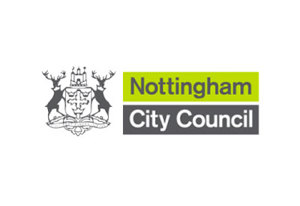Nottingham City Council Case Study


Challenge
Data management and publication is critical for all planning authorities, but it is time consuming and can be inefficient and inaccurate without the right processes in place.
Nottingham City Council wanted to address – and meet – increased demand for planning data, whilst also tackling capacity and resourcing issues so that it could deliver more by freeing up in-house expertise to focus on value added work.
Solution
To meet the critical challenge of accessing and publishing data held within the core development management system, the Council worked in partnership with 1Spatial and IDOX to build an automated integration between its core systems. FME server is the data integration ‘glue’ that provides a no-code automated data dissemination and reporting workflow within the enterprise infrastructure. Fully automating and scheduling data maintenance tasks facilitates statutory reporting, publication of open data and dashboard visualisations.
Together with 1Spatial, the Council built an FME process that connects to the Oracle database sitting behind IDOX Uniform Enterprise. This queries, joins and aggregates data from multiple sources to populate a templated Excel worksheet for the Council’s PS ‘district’ planning matters return. The return runs on a quarterly schedule managed by FME Server. The output set of metrics are emailed to a senior planning officer for sign off before being reported to central government. This same FME process is also available as an FME Server Workspace App for planners to create customised versions of the report based on case officer, date range and ward.
By implementing the IDOX Uniform Enterprise solution, the Council supports in-system data use for case management performance to enable quick and easy access to planning information in different formats through a simple user interface. These capabilities empower planning officers with self-serve data discovery, enabling them to use simple metrics to extract, publish and share reports without the need to involve members of the GIS Team. Whilst there is a complicated data model behind the solution, data is accessed through an easy-to-use interface, which requires no expert training or specialist knowledge, with outputs received via an Excel spreadsheet.
Key benefits
- Realises the DLUHC’s reform of the planning system in England by supporting the planning ecosystem related to applications and decisions.
- Drives added value for users of the planning system.
- Improves data quality, use, availability, & transparency.
- Makes better use of planning data and increases sharing of reusable components and practices.
- Produces tangible products that can be shared with other planning authorities.
- Addresses increased demand for planning data and the issue of capacity, expertise and resources experienced by all local authorities.

